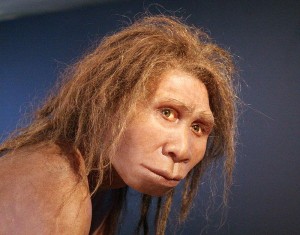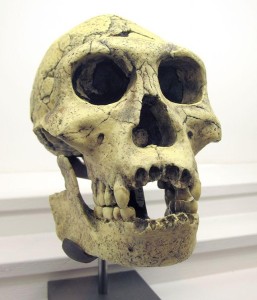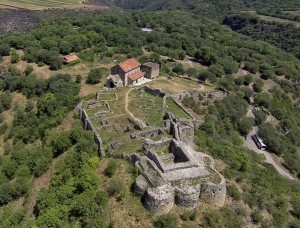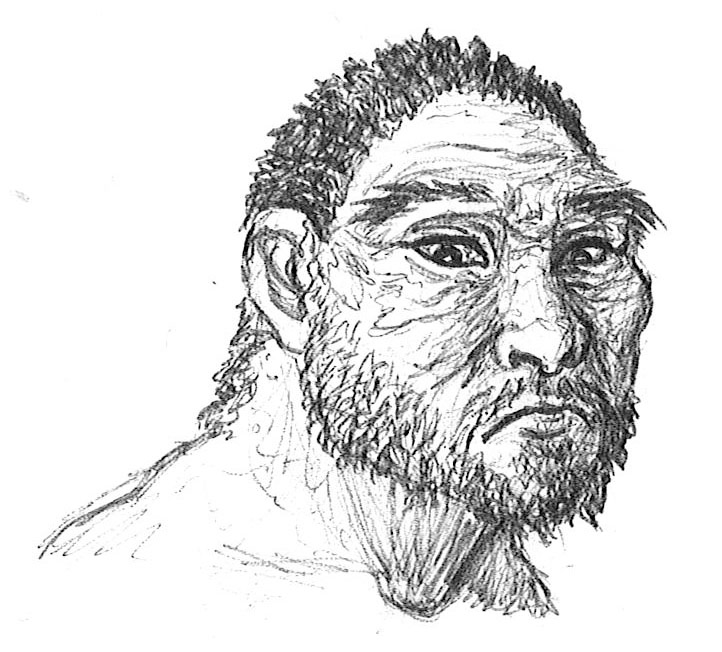Part IV: Pleistocene Epoch
30. Homo georgicus
Homo georgicus (1.8 mya)
(“human” / “Georgia”)

INTRODUCTION
Located in the southern Caucasus region of the Republic of Georgia (see Figure 30.2), Dmanisi is the only known site for the geographic species Homo georgicus, of the erectus grade. Some treat it as a subspecies of Homo erectus, H. erectus georgicus, while others attribute it to H. erectus.
PHYLOGENY
H. georgicus is dated to the same time as the earliest African material at 1.8 mya. It is thus thought to be (1) closely related to or possibly a descendent species of Homo ergaster or (2) possibly the ancestor of H. ergaster and Asian Homo erectus.
DISCOVERY AND GEOGRAPHIC RANGE
Leo Gabunia and Vekua Abesalom discovered the site and first reported on the hominin fossil material. Beginning in 1991 and continuing to the present, David Lordkipanidze and his team have recovered teeth, multiple skulls, and numerous postcranial remains. A partial skeleton that was discovered in 2001 was thought to be more primitive than other erectus-grade material, and there was speculation that H. habilis may have preceded H. ergaster out of Africa, where it then evolved into an intermediate form. Since that time, researchers have come to believe it to be a more a primitive form of the erectus grade versus H. habilis.
The site has an interesting history (see Figure 30.4). The area has been settled since the Bronze Age. In the 6th century, an orthodox Christian cathedral was built on the site. By the 9th century, the region was under Arab rule. Because of its location on two important trade routes, by medieval times it had become an important commercial center. It was conquered by the Seljuk Turks in the 11th century and later liberated by Georgian kings. The area was then attacked by the Turkomans in both the 14th and 15th centuries, from which it never fully recovered, in terms of its regional importance and economic development (Wikipedia contributors 2015b).

PHYSICAL CHARACTERISTICS
H. georgicus exhibited a mix of primitive and erectus-like characteristics. They had small, robust skulls and habiline-like, prognathic faces (see Figure 30.3). Their upper limbs were australopith-like, while their spines and lower limbs were more modern. The cranial vault for one of the four adult skulls measured only 546 cc. Their molars were large, and tooth microwear suggests that they ate tough, fibrous plant foods and thus had a low-quality diet. Their canines were surprisingly long.

Review of Primitive Characteristics
- Robust skull.
- Small brain.
- Prognathic face.
- Large molars and long canines.
Review of Derived Characteristics
- Human-like spine and lower limb.

ENVIRONMENT AND WAY OF LIFE
The environment at the time when H. georgicus lived in the area is thought to have been a mosaic of forest and steppes. A great many Oldowan tools and debitage (i.e. small chips of stone that are byproducts of tool manufacture) were found at the site, along with faunal remains. Due to their australopith-like upper limb morphology and the dangerous predators at the site, there is speculation that they may have slept and foraged in trees (de Lumley et al. 2005).
Of great interest is an older edentulous male. The tooth loss was antemortem because the alveolar bone had been resorbed, showing that he lived for quite a while after he began losing his teeth (de Lumley and Lordkipanidze 2006). He would likely have needed care during the intervening years, and his family or group-mates must have helped and supported him. This would be the earliest known evidence for kin selection and/or reciprocal altruism, respectively. Kin selection involves incurring a cost to oneself in order to benefit relatives, thus increasing their survival and propagating your genes because they share a portion of your genes in common. Reciprocal altruism is basically tit for tat. It explains why we will help nonrelatives. During our long hominin history prior to agriculture and sedentism, our ancestors lived in small bands. They were related to the members of their groups by blood or marriage. If Individual A incurred a cost to help a nonrelative, Individual B, there is a good chance that Individual B may have been around at a future point in time when Individual A needed help. Genes involved with those cooperative behaviors could thus have spread via natural selection. We are, and past hominins were, cooperative.


